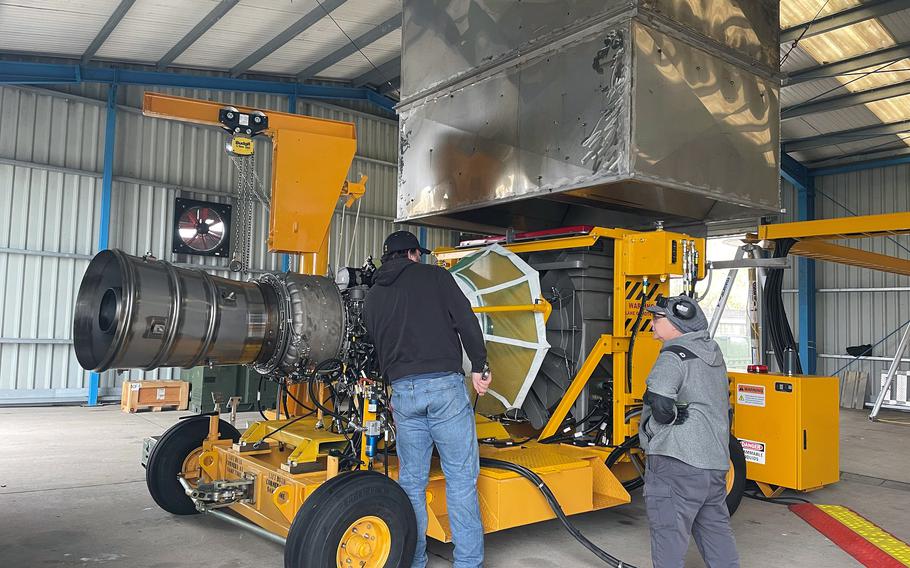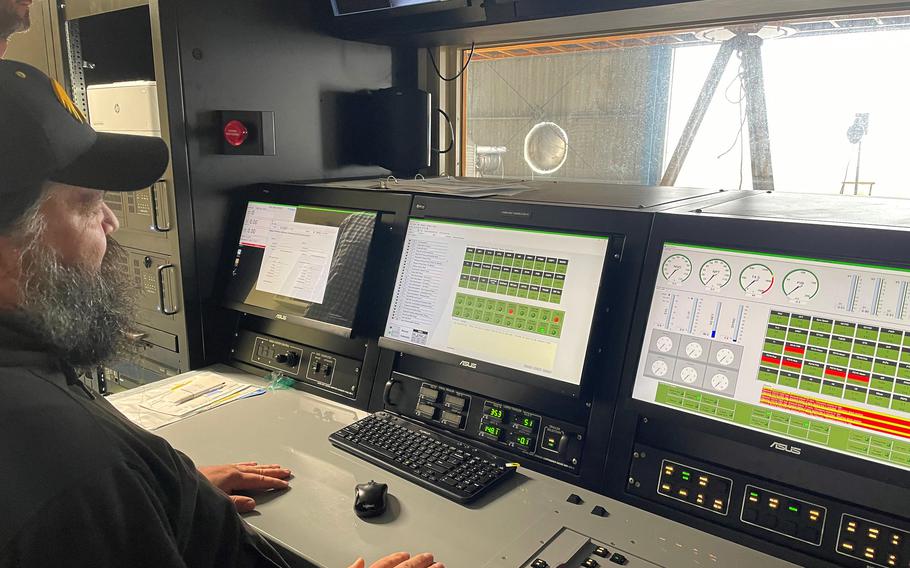
The U.S. Army in Europe in October 2024 added a new digital engine diagnostic system that is expected to improve flight safety for pilots and its fleet of helicopters. Army officials say it also will improve the ability of the Army to deploy its attack helicopters on short notice. (John Vandiver/Stars and Stripes)
MANNHEIM, Germany — When the U.S. Army was poised to shutter its barracks here a decade ago, one of the casualties was an aviation system that helped ensure helicopter fleets of Apaches, Black Hawks and Chinooks were fit for flight.
Now, the high-tech digital engine diagnostic tool is back at its old home at Coleman Barracks for the first time since 2014, a move Army officials say amounts to a combat aviation game changer in Europe.
The arrival of the Digital Flexible Engine Diagnostic System in late October means engines for Army helicopters will no longer need to be returned to the United States for maintenance and safety testing.
Engines will now be back in service in a matter of days rather than being sidelined for over a month, with repair times reduced by about 80% overall, Army aviation officials in Europe said.
The diagnostic tool measures the performance of million-dollar helicopter engines, which are mounted on the system for a series of performance tests. If a problem is detected, technicians on site can make the necessary fixes, said Brian Wright of U.S. Army Europe and Africa’s aviation office.
Back in 2014, the Army in Europe didn’t want to part with the capability, but closure plans for Coleman Barracks had officials looking for a new location, Wright said.
The hope was to position the system in Illesheim, where Army aviators operate. But there were problems with getting approvals from German authorities because of local concern about the noise of the testing apparatus, Wright said.
And by the time the Army reversed course in 2015 and decided to hold on to Coleman Barracks rather than turn the keys over to the Germans, it was too late.

Chinook, Apache and Black Hawk helicopter engines can be mounted on the special diagnostic system, which finds mechanical problems. The device arrived in October after being absent from the Army’s inventory in Europe for a decade. (John Vandiver/Stars and Stripes)
In the years since, sending engines back to the U.S. for servicing has been inconvenient and costly, Wright said.
USAREUR-AF’s pitch for getting the system back meant competing against other regions for an asset that’s in limited supply. Wright estimated there were only around a dozen such systems across the Army.
A change in the security environment in Europe brought on by Russia’s full-scale invasion of Ukraine was likely one of the factors involved in the decision, Wright said.
Other aspects of the Army’s buildup in recent years in Europe, such as the expansion of tank brigade rotations to the Continent and the addition of air defense firepower, have gotten widespread attention.
But logistical upgrades, such as maintenance tools that help keep combat aviators flying, often play an unsung role, Army officials said.
The system “will ultimately improve our ability to deploy our forces rapidly and safely whenever we might be needed,” Chief Warrant Officer 5 Raleigh Strabala, the 12th Combat Aviation Brigade’s maintenance officer, said Thursday.
It also should give a boost to U.S. allies in Europe, many of which fly Apaches, Chinooks and Black Hawks. U.S. aircraft are the first priority, but American military officials plan to make the capability available to allies so their own fleets are more combat-ready.
“Everything we’re trying to do as a headquarters is about whether this is not only good for the U.S. Army but is it also good for NATO,” said Maj. Nicholas Chopp, a USAREUR-AF spokesman. “Having this capability and how quickly they can bring engines in and out, that means now you’ve got another (allied) aircraft that’s ready to fly.”